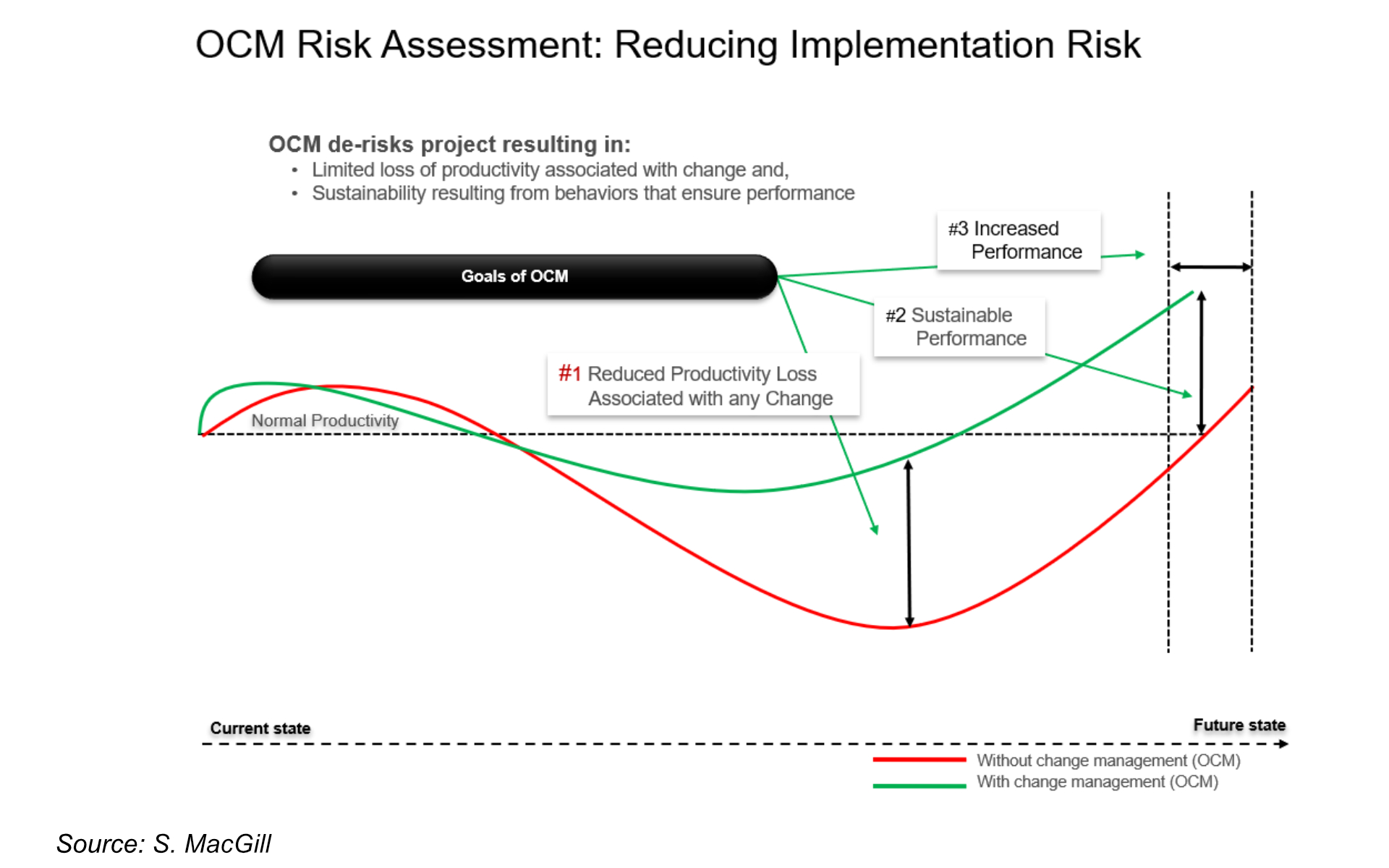
In an earlier blog, we introduced the concept of OCM’s value.
In support of that value, this blog poses the questions “How do you know?”, “Can you measure it?”, and can you institutionalize these measures to support the sustainable benefits of the future state?”
As a reminder, here are the areas of value normally associated with OCM:
The first involves:
- The speed with which an organization adapts to changes and achieves the productivity promised by the future state. An example is the learning curve and how fast it can be climbed.
The second involves the sustainability of the benefits associated with the change:
- These benefits are the result of long-term changes to behavior. Being agile comes to mind here and the ability of employees to make decisions on less than perfect information.
I think the following graphic does a good job of presenting these two values.

So, there you have a starting point. Now let’s dig a little deeper and answer the question of what do we measure and how do we measure it.
From there, we will answer the question of sustainability and address who is involved in determining what we measure, who is involved in the measurement process, how the measures are used, and how are they institutionalized?
What are the traditional measures of OCM? We believe there are four broad areas.
#1 Measurement: Effectiveness of OCM activities
- What does it measure? These measures are perhaps the most straight forward in measuring the effectiveness of OCM. They answer questions about the effectiveness of change communications, training, risk management, leadership participation, stakeholder strength, and project health (on time on budget)
- How are they measured? Through participant surveys, monitoring training attendance, input from project management (on time, on budget), and their use in go no go activities.
- Strength? Specific to OCM and its time-tested success components.
- Weakness? Assumes that OCM activity produces results.
#2 Measurement: Achievement of Future State Productivity Gains
- What does it measure? The number of times a new activity or process is performed correctly and within quality parameters…e.g. # of workarounds being performed.
- How are they measured? Process and quality metrics, surveys, checklists, business case metrics.
- Strength? OCM plays a significant role in driving these results.
- Weakness? OCM is not the only variable in driving these results.
#3 Measurement: Sustainability of Future State Performance Behaviors
- What does it measure? New behaviors that drive performance, sustainability of these new behaviors, leadership’s understanding of the new behaviors, and how leadership spots and manages the new behaviors.
- How are they measured? Leadership’s input, performance evaluations, compliance audits.
- Strength? Behaviors have a direct link to performance and sustainability of the future state.
- Weakness? While behaviors are a primary source of sustainable performance other variables are involved in sustainability
#4 Leadership Input: Leadership’s Judgment of their Ability to Manage Resistance
- What does it measure? Leadership’s perception of OCM to further their leadership skills.
- How are they measured? Interviews with leadership.
- Strength? Input directly from leadership. Demonstrates their acceptance of OCM activities. Builds foundation for making measure permanent.
- Weakness? Opinions and perceptions rather than fact.
So, how do we ensure these measures are adopted going forward? How do we institutionalize them to ensure they drive long-term value and build OCM muscle for the organization?
In our next blog, we will answer these questions and more to ensure the effectiveness of OCM.
We hope that this blog post has given you a solid introduction to the measures of OCM. While there is more to follow in our next blog, we would love to hear from you to discuss your thoughts and questions on what to measure.



